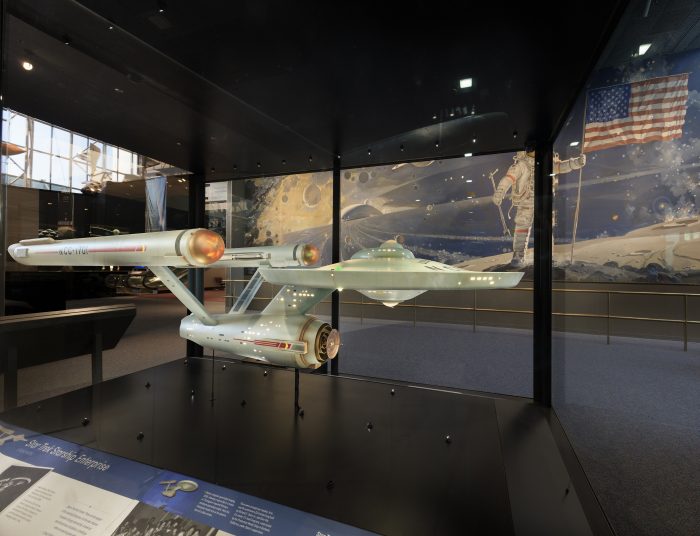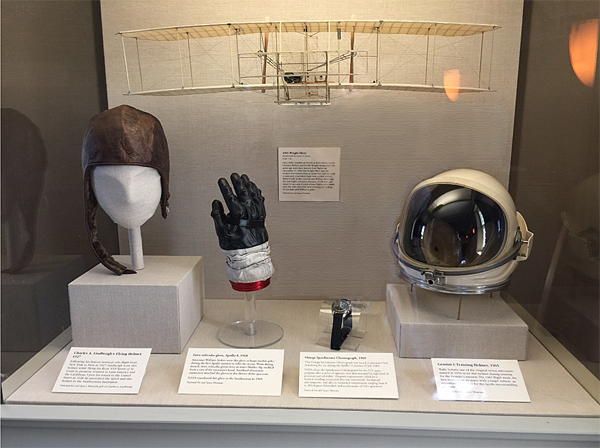A few of my favorite things: Jean Sherman
Smithsonian staff work countless hours in the halls of our museums and research centers, in the field, at the Zoo, in our gardens and facilities. We are privileged to spend time with some of the nation’s most cherished treasures as we go about our duties. Sometimes, these unique experiences find a special place in our own personal stories. Amy Kehs introduces Jean Sherman and a few of her favorite things.

Jean Sherman, IT Project Manager for the Office of the Chief Information Officer. (Photo by Mignon Erixon-Merritt)
I think if James Smithson were alive today he would really like Jean Sherman. Jean takes the Smithsonian mission of “the increase and diffusion of knowledge” very much to heart, while adding a dash of hope, imagination and excitement to the founder’s charge.
To hear Jean tell the story of how she came to work at the Smithsonian is quite remarkable. After all, how does a person with a doctorate in music from the University of Michigan come to be employed at the Smithsonian as an IT Specialist in the Office of the Chief Information Officer? Jean’s journey is not as unlikely as it seems. While working on her education in music, Jean became interested in digital music and soon she was learning everything she could about technology; eventually she found herself on a completely new career path in technology consulting. Jean believes her musical background has provided her with the skill set she needs to see patterns, work with people and notice the nuance and beauty around her.
Not only does she take the Smithsonian mission quite seriously, she also is committed to OCIO’s vision “to empower all Smithsonian staff members with the technology solutions they need to do their best work.” When asked her favorite things at the Smithsonian, Jean first replied, “Can the people of the Smithsonian be on my favorites list?” She believes in and appreciates the brainpower and talent of everyone at the Smithsonian and the importance of their work—supporting them by giving them the digital tools they need is the best part of her job.
That being said, Jean went on to share three favorite things from our collections and explained what inspires her about these artifacts.

The studio model of the Starship Enterprise from the original Star Trek television series underwent an extensive restoration, which was completed in May 2016, and is now on view in the “Boeing Milestones of Flight Hall” at the Smithsonian’s National Air and Space Museum. (Photo by Eric Long / NASM)
Jean first turned to the model of the USS Starship Enterprise from the beloved television and film series, Star Trek that is now on display at the Air and Space Museum. “I’ve been a huge fan of Star Trek since I was 11 years old,” she says. “Especially the original 1960’s television show. I love the message of hope and cooperation that it gave to its viewers. It was a time of civil unrest and war. But every week I would watch the show and I would imagine that it was our real future. I loved its message of ‘we are going to get through this and then go and explore together.’ It was so necessary and important at the time.”

A flight cap that belonged to Charles Lindbergh and a helmet worn by astronaut Wally Schirra on display with a model of the Wright Flyer and other objects in the office of the Smithsonian Secretary. (Photo by Jean Sherman)
Another favorite is not something that is on public display but something that she looks forward to seeing every time she is able to visit the Smithsonian Secretary’s office in the Castle. A display case in the Secretary’s office contains Charles Lindbergh’s flight cap from his trans-Atlantic flight in 1927 alongside astronaut Wally Schirra’s space helmet from 1965. Jean is not only inspired by the short amount of time that passed between these two events but also the fact that these two artifacts protected these men’s heads, which held the knowledge and courage that they needed to be pioneers, and embodied the hopes and dreams of their generation. Like the Starship Enterprise, she loves that these items inspire and symbolize a sense of adventure, imagination and courage.
Finally, Jean is inspired by the collection of early human reconstructions in the Hall of Human Origins exhibit at the National Museum of Natural History. Artist John Gurche used forensics and his knowledge of fossils to create these extremely lifelike reconstructions of early humans. Jean is fascinated by the amount of knowledge and passion he needed to complete these scientific works of art. She also loves the connection to the past that they represent and their place on our continuum of change. “The busts make me pause and think, what will humans be like in the future? Will we continue to evolve socially as well as physically? It is an exhibit that makes visitors think not only about where we’ve been but also where we are going.”

Detailed reconstructions of early humans by John Gurche are on display at the National Museum of Natural History’s Hall of Human Origins. (Photo courtesy NMNH)
It is clear that Jean is inspired and motivated by people who inspire others to learn and create, as well as the collective knowledge of hope and inspiration we have acquired throughout history. Her dedication to Smithson’s original directive and also to helping her fellow employees achieve “the increase and diffusion of knowledge” is in turn, inspiring and motivating to us.
Posted: 19 September 2017
-
Categories:
Air and Space Museum , Feature Stories , Natural History Museum



